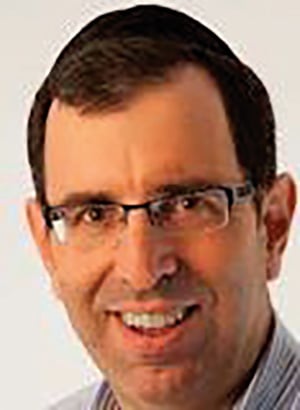
Reviewing “Jews in Medicine: Contributions to Health and Healing Through the Ages,” by Ronald L. Eisenberg, MD. Urim Publications. 2019. Hardcover. 464 pages. English. ISBN-13: 978-9655243000.
There’s an old joke where a Jewish grandmother is watching her two grandchildren. Someone asks her how old the children are. She replies with nachas that the doctor is 4 and the lawyer is 2. The joke underscores how important and pervasive the medical profession is within modern Jewish culture.
In “Jews in Medicine: Contributions to Health and Healing Through the Ages,” Ronald Eisenberg, MD, a professor of radiology at Harvard Medical School and radiologist at Beth Israel Deaconess Medical Center, has written a fascinating work that details the substantial contributions of Jews in the medical field from Talmudic times to the current era.
Eisenberg profiles over 400 Jewish physicians, psychologists, scientists and other medical professionals. He provides brief biographies of their life and details their medical accomplishments.
The book notes that at the end of the 18th century, the age of specialization of clinical medicine started. With the advancement of science and medical discoveries, a single physician could no longer master then entire state of the medical arts. Thus, the need for specialists arose.
Before the age of specialization, many of the physicians were polymaths, whose contributions extended to other fields. These doctors include 15th-century Yuceff Faquin and Abraham Zacuto, whose work on cartography and astronomy revolutionized ocean navigation.
During the age of specialization, Eisenberg writes that Jewish physicians, when they could get into university, were still excluded from the mainstream areas of internal medicine and general surgery. They therefore flocked to the then less popular clinical specialties that did not attract their non-Jewish colleagues, such as ophthalmology, dermatology, neurology and psychiatry.
The book quotes the well-known Talmudic saying that “the best of physicians are destined to go to hell.” While there are countless explanations of what that puzzling statement means, Eisenberg quotes the most common explanation, that it refers to physicians who place all of their healing powers solely within themselves, and do not acknowledge a higher power.
Nothing personifies that more than Leo, a 15th-century Italian physician who was so confident in his ability to produce a cure for gout for the son of the Grand Duke of Russia that he guaranteed on his life that he could cure the lad. The prince eventually died, and Leo was ultimately beheaded.
Eisenberg highlights that for much of the 17th through 20th centuries, entry into the medical profession was for the most part highly restricted for Jews. In Europe, almost all of those who wanted to attend medical school found that unless they renounced their faith and were baptized, they could not attend university. He profiles a number of those who ultimately and sadly placed professional aspirations before faith.
In the United States, that manifested itself in very limited quotas for Jews in medical schools. He writes that these quotas are what led to the creation of Jewish hospitals. At its peak, there were about 113 Jewish hospitals in the United States. Currently, there are about 22 that are still operating. The decline in Jewish hospitals is a direct result of the quotas no longer being enforced.
Another astounding element in the book is the vast number of Jewish doctors that fled Germany and Europe during World War II given they could not work under Nazi rule. Many of them fled to the United States, South America, England and Israel, where they flourished and made live-saving discoveries and inventions.
Eisenberg writes that postage stamps in the United States and Israel only posthumously honor a person. He reflects that practice in this book, with the exceptions being for living winners of the Nobel or Lasker Prizes. That limits the number of profiles in the book, and I would have liked to see biographies of the many leading Jewish physicians still alive. But even so, that does not significantly take away from this most enjoyable and interesting read.
The Jewish contributions to medicine are pervasive and deep, from the discovery of aspirin and Novocaine, to stopping blindness in infants due to oxygen therapy, to discoveries of vaccinations for polio, Hib and much, much more. Vaccinations are the greatest public health discovery in the history of science, and the Jewish contributions in that area are sizable.
While written by a medical professional, the author writes for the layman, and no advanced medical or scientific knowledge is needed. The Talmud notes that “one who saves one life is as if they saved the entire world.” In the book, Eisenberg profiles hundreds of people who have saved countless worlds.
This is a most enjoyable and inspiring read. In “Jews in Medicine,” Eisenberg has beautifully written how the contributions to health and healing by members of the Jewish faith are something to be most thankful for and proud of.
By Ben Rothke
Ben Rothke lives in New Jersey and works in the information security field. He reviews books on religion, technology and science.










